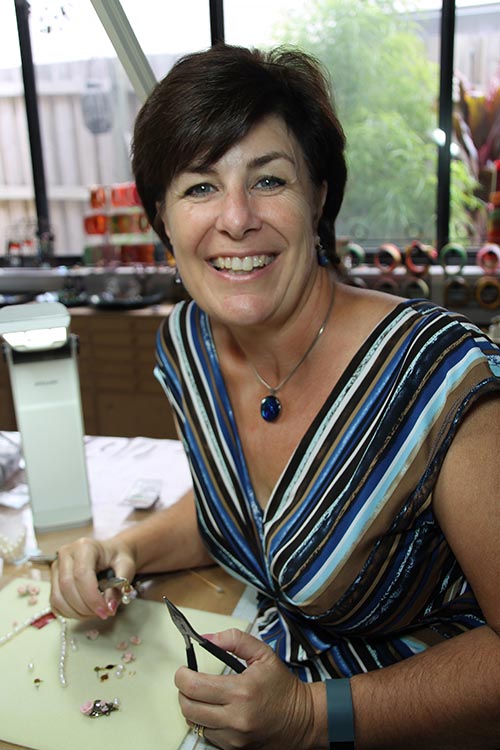One of the projects we're tackling is the bonbonnieres. Hers will feature a handmade polymer clay tag with a sentiment on it. It's a big undertaking to make 100 so to speed things up, we made a mould from silicone rubber.
But before we get into making the mould, we created a master tag by following Marie Segal's tutorial from Art from my Heart. Marie suggests looking in the Mexican aisle for the alphabet noodles she uses to create her sentiments. In Australia, I found them in the Italian aisle. But no matter where you are in the world, look for something like San Remo's Soup Pasta.
Begin by conditioning the clay and then place it between the wooden stir sticks and roll it out.
 |
| Use two sets of two wooden stir sticks taped together as a thickness guide for rolling the clay. |
To create the tag, we used an oval cookie cutter to cut out the clay.
 |
| Press the cookie cutter into the clay |
The sentiment is created by pressing the alphabet pasta onto the clay oval. Whilst we wanted the sentiment to be raised, the letters still needed to be evenly pressed into the surface of the clay so for a depth guide, we replaced the stack of stir sticks with a single stir stick plus a bamboo skewer on each side of the oval. Once the letters are in position it's time for baking. Just follow your clay manufacturer's instructions.
 |
| Place the alphabet noodles into position and press them into the |
Once cooled, it was over to me to make the mould. You can use silicone putty to make the mould as Marie did, but for this project, a mould made from silicone rubber will make a better, more flexible mould. I've used a shallow plastic lid that is a little larger all around than the master tag. It needs to be at least 6mm (1/4") deeper than the master too. I didn't use any adhesive to hold the tag in place but you could use some double sided tape on the bottom edges if your were concerned about the silicone seeping underneath - but don't tape it into position yet.
Now you're ready to prepare the silicone. To work out how much you need, fill the lid with water and pour it into a measuring cup/jug. Make sure to thorougly dry the lid again and then position the tag in the centre of the lid. Measure and mix the silicone according to the package directions.
Pour the silicone into the lid in one spot, allowing it to spill over the oval tag until there is at least a 6mm (1/4") thickness of silicone over the top of the tag. Pouring in one spot helps eliminate air pockets from forming. Set the mould aside to cure.
Once cured, ease the mould out of the lid.......
.....and then remove the master from the mould.
Voilà! Now we have a mould ready to create the 100 tags needed for the bonbonnieres.
You can see it's a pretty straight forward process to make your own simple mould but it didn't go completely to plan for us. You'll notice the title of this post is "Mould Making Do's and Don'ts". So now it's time to show you what not to do.
The photo below shows the first master tag we made. We made sure to spell the words backwards like you would on a stamp.
And then we proceeded to make the mould and remove it from the lid. Can you see the problem yet?
Here's what happens when you cast from this mould.
Everything is backwards!
So you can see that even experts make mistakes!
Don't forget to stop by again later in the week to see how we fared with the casting of the tags.
Happy Resining!

Subscribe to my email list and learn how to resin like an expert.











